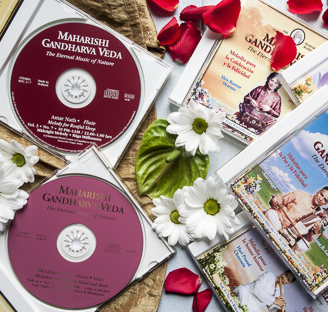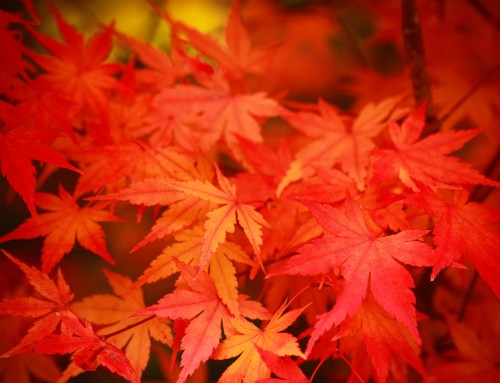
Maharishi Gandharva Veda CDs available here Maharishi Veda App available here
Music for the Mind, Body and Environment
Devabrata Chaudhuri – Maharishi Gandharva Veda performer
“If you could hear the changing frequencies present at the first awakening of the dawn, in the dynamics of midday, or in the deep silence of midnight, you would be hearing the frequencies of Gandharva Veda music. These sublime melodies neutralize stress and disharmony in the environment, and gently restore biological rhythms by attuning the physiology to the cycles of nature that underlie each hour of the day and each season of the year.”
The Five Senses
Maharishi AyurVeda takes into consideration the health of every aspect of the person: body, mind, emotions, consciousness and the environment. Maharishi AyurVeda’s range of techniques to restore balance to the individual includes through the five senses.
Massage works through touch; food, spices and herbs through taste; aroma oils through the sense of smell; being in the beauty of nature through the sense of sight, and Gandharva Veda music balances the mind and body through the sense of hearing.
The idea of music as therapy is not exclusive to Ayurveda. Studies have shown how music affects pulse rate, circulation, blood pressure, metabolism and respiration rate.
Music has been used in hospitals, for example, to alleviate pain and to decrease the need for pain medication and anaesthesia.
Natural cycles, the doshas and biorhythms
In Ayurveda, there are periods during the day related to each of the doshas (the governing principles of the mind and body). The ‘dosha clock’ is divided into six four-hour periods: Vata periods are 2 a.m. – 6 a.m. and 2 p.m – 6 p.m.; Pitta periods are 10 a.m. – 2 p.m. and 10 p.m. – 2 a.m.; Kapha periods are 6 a.m. -10 a.m. and 6 p.m. – 10 p.m.
Advice such as eating the main meal at midday, relaxing in the evening and settling to sleep by 10 p.m. is given with regard to the activities of the doshas during these periods. Similarly, Maharishi AyurVeda herbal supplements are prescribed to be taken at certain times of day to optimise their dosha-balancing influence.
Research in the science of chronobiology has shown that performance, alertness and sleepiness are influenced by circadian rhythms and that living organisms adapt to solar-related and lunar-related cycles in a cyclic pattern of physical, emotional or mental activity known collectively as biorhythms.
Research in the workplace has shown there are times of day when productivity is greater and other times when risk is greater.
The melodies and rhythms of Maharishi Gandharva Veda music are said to attune the mind and body with the cycles of Nature. The ragas (melodies) of Gandharva Veda are played at different times of the day according to their inherent qualities.
Gandharva Veda follows the same principles as Ayurveda: morning ragas are energizing, evening ragas relaxing. Ragas are also prescribed to balance specific doshas and for different seasons.
Balance, inner peace and better health
Maharishi Gandharva Veda is the coherent flow of sound, designed to promote balance, inner peace and better health. Performing or hearing these melodies at the proper time of the day neutralizes stress in the mind and environment and creates a harmonizing influence, not only for the individual but for the whole world.
Along with the Transcendental Meditation® technique, Maharishi Gandharva Veda is a technology that increases total brain functioning. It produces a state of relaxation and promotes the experience of bliss and inner awareness.
As a result, people experience decreased tension, irritability, and lethargy. With the settling down of mental activity, there is also a tendency to experience finer states of awareness.

Maharishi Gandharva Veda on CD or App
Maharishi Gandharva Veda offers a range of ragas for all the 24 hours of the day, featuring various instruments such as the sitar, bansuri (bamboo flute), shenai, santoor, sarangi and vocal (see links below).
It is best to listen to the music in a relaxed position with closed eyes free from distractions. The ragas are ideal if you want to unwind in the evening, or to be able to fall asleep, or if you want to take a 10-minute break from work to rest and re-energise the mind.
Day or night
Each set of recordings contains melodies suitable to the times of day, and there is a choice of instrumental or vocal performances.
You can listen to them anywhere, with a portable CD player, or through your phone or tablet using the Maharishi Veda app.
Even playing Maharishi Gandharva Veda at very low volume creates an atmosphere of coherence and peace in the home throughout the day or night.
- Maharishi Gandharva Veda CD catalogue here
- Maharishi Veda App available here
- About the qualities of Ragas and times of day here
Gandharva Veda music by instrument
The knowledge of when to play each melody is based on three-hour periods called Praharas which correspond to the changing frequencies of nature throughout the day. Maharishi Gandharva Veda provides music to create balance in the environment throughout the eight Praharas of the day – Sunrise, Morning, Midday, Afternoon, Sunset, Evening, Midnight and Late Night. In addition to this, there are certain ragas which can be played at any time of the day or night.
DISCLAIMER: The information in this document is presented for the sole purpose of imparting education on Maharishi AyurVeda and neither the information nor the products are intended to diagnose, treat, mitigate, cure, or prevent any disease. If you have a medical condition or are pregnant or lactating, please consult a health professional and it is recommended that you speak with your physician before making significant changes to your diet or routine.






